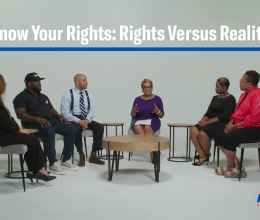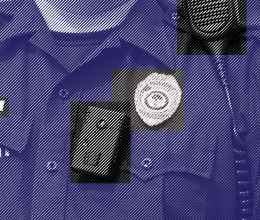On October 31, 1963 while on a routine beat through downtown Cleveland, Cleveland Police detective Martin McFadden with 39 years of police experience noticed three men acting suspiciously and pacing in front of a jewelry store on Euclid Avenue. Concerned the men were “casing a job, a stick up” and were carrying weapons, McFadden identified himself as a police officer and asked them their names. When the men only “mumbled something” in response, McFadden frisked them and found a pistol in John W. Terry’s overcoat pocket, and a revolver in Richard Chilton’s coat pocket. The third man, Katz, was unarmed. McFadden arrested and charged Terry and Chilton with carrying concealed weapons. Judge Bernard Friedman of the Cuyahoga County Common Pleas Court found the men guilty and ruled that, given the suspicious nature of their behavior and McFadden’s concern for his safety, the decision to frisk was permissible. The appeals court affirmed the decision. Terry appealed to the U.S. Supreme Court in 1967.
Later known as the “stop and frisk” case, Terry v. Ohio represents a clash between Fourth Amendment protection from intrusive, harassing conduct by police when no crime has been committed, and the duty of an officer to investigate suspicious behavior and prevent crime. ACLU cooperating attorneys Louis Stokes and Jack G. Day represented Terry. Bernard A. Berkman of the ACLU of Ohio, with Melvin L. Wulf and Alan H. Levine of the national ACLU, filed an amicus brief urging reversal.
In June 1968, the United States Supreme Court affirmed the conviction and set a precedent that allows police officers to interrogate and frisk suspicious individuals without probable cause for an arrest, providing that the officer can articulate a reasonable basis for the stop and frisk. Significantly, Terry does not provide blanket authority to intrude on an individual’s right to be left alone, nor does it allow such intrusion based on a police offers inarticulate hunch that a crime is about to occur or is in progress. However, it does radically expand police authority to investigate crimes where there is a reasonable basis for suspicion.
Read the decision.







